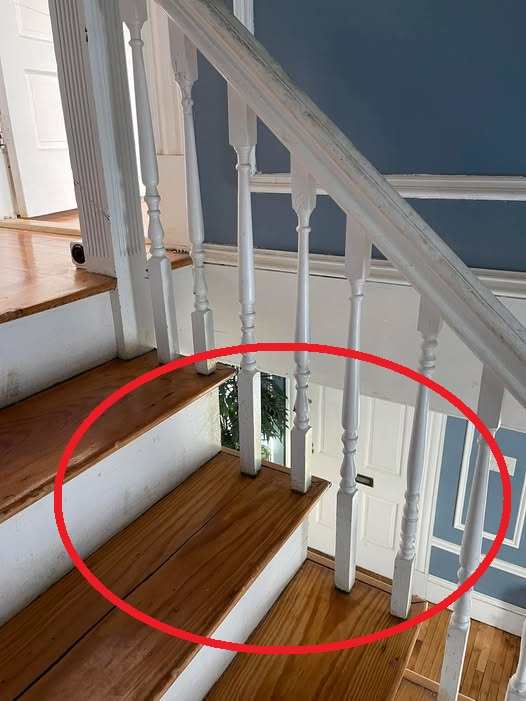Growing up and even well into adulthood, I’ve always lived in homes with more than one story, which means staircases have always been part of my daily routine. But if I’m being honest, I never really gave them much attention. One of our previous homes even had a beautifully grand staircase, the kind that probably deserved a second look, but I still never bothered to really examine it. Looking back, I regret not paying closer attention—especially now that I’ve learned about a curious detail found in many traditional staircases: the upside-down baluster.

At first glance, spotting a single baluster flipped upside-down among the others might seem like a mistake, something a tired builder overlooked or a rushed installation gone wrong. That’s certainly what I would have assumed before diving into the fascinating history and superstition tied to this tiny architectural anomaly. It turns out that upside-down balusters aren’t usually errors at all; they’re often placed that way deliberately, and the meaning behind them can be surprisingly deep. In fact, there are two main reasons people say this design choice exists. The first is rooted in a longstanding tradition among craftsmen and builders. According to this belief, the single upside-down baluster is meant to represent the idea that only God creates perfection. Everything made by human hands, no matter how skilled, should contain a deliberate flaw to acknowledge our imperfections and humility.
It’s a quiet, symbolic act—a way of saying, “We’re human, and we don’t pretend otherwise.” That symbolism alone is kind of beautiful when you think about it, a little piece of philosophy carved right into your staircase. But the second explanation adds a spookier layer to the story. In some cultures, it was believed that if a staircase were built too perfectly, it could invite the devil himself to climb up into the home.
By installing a single upside-down baluster, builders introduced a flaw that would supposedly disrupt the spiritual path, keeping dark or evil forces from ascending the staircase. In this view, the baluster becomes not just a symbol, but a form of spiritual protection—a built-in guardian watching over the household. Personally, I find both interpretations fascinating and a little eerie. They make you realize how much meaning people have historically attached to the spaces we take for granted. Since learning about this, I’ve become oddly obsessed with checking staircases wherever I go, scanning the balusters for one that’s just a bit off. Sadly, our current home doesn’t offer the opportunity for such discoveries. Our staircase is narrow and flanked by solid walls on both sides, so there are no balusters at all. That makes me think even more about our old house—the one with the grand staircase.
@ed_in_burgh a common feature in some Scottish homes is a single upside down baluster on the staircase. there are multiple theories as to why, some people say it is to ward off evil spirits, some say it’s in deference to God, and some people say it’s a secret code meant to signify support for Bonnie Prince Charlie centuries ago or Scottish independence today #expat #expatlife #cultureshock #expatinuk #scotland #edinburgh #devilsstaircase #superstition #pagan #jacobite #houseofstuart #scottishindependence #europeanhome #architecture ♬ Scottish Fiddle Jig – The Scottish Bagpipes Highland Pipes
Did it have an upside-down baluster tucked into its design all along? Was I walking past this piece of tradition and superstition every day without even knowing it? It’s a mystery that now nags at the back of my mind, and I wish I could go back just for a minute to see for myself. What amazes me most is how something so small and seemingly insignificant can carry so much weight. A single flipped piece of wood, easily overlooked, can represent a powerful message of humility or act as a talisman against evil. It reminds us that the things we build—and the choices we make—often reflect deeper beliefs and stories, even when they’re hidden in plain sight. So the next time you walk up or down a staircase, especially in an older home, take a moment to look more closely. You might spot an upside-down baluster and realize you’ve just found a little whisper from the past, a subtle symbol of humanity’s imperfections or a quiet charm meant to ward off dark forces. Either way, it’s proof that even in the most ordinary parts of a house, you can uncover something extraordinary.





